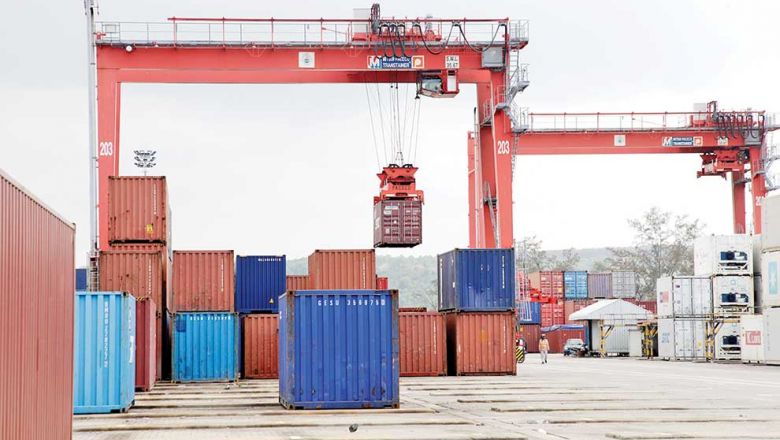Exports up 1.6% in first five months, imports surge 17%
Exports up 1.6% in first five months, imports surge 17%
Cambodian exports in the first five months of 2021 were worth $5.982 billion, up 1.6 per cent year-on-year, while non-gold imports surged 17 per cent to $8.664 billion, according to the Ministry of Economy and Finance. 
Although the Cambodian economy continues to be affected by the February 20 community outbreak of the novel coronavirus, international trade remained in growth territory overJanuary-May, clocking in at
$14.646 billion, the ministry said in a report on socio-economic trends released early this month.
Exports were equal to 20.8 per cent of gross domestic product (GDP) and were mainly driven up by bicycles and other non-textile goods, it said.
And non-gold imports were 30.2 per cent of GDP, and were buoyed by fabrics, construction materials, fuel and other goods, it added.
The latest outbreak – Cambodia’s third – persists, and is putting pressure on key economic sectors, it said, adding that the Kingdom is striving to ensure robust GDP growth for this year.
“The Cambodian economy is expected to grow positively in 2021 due to the recovery of the global economic situation and the economy of Cambodia’s trading partners; the growing demand for agricultural products; and the possibility of” attracting garment factories relocating from Myanmar and taking on more export orders as international buyers abandon the coup-hit country, the report said.
Cambodia Chamber of Commerce vice-president Lim Heng told The Post on July 8 that this was “good data” that signalled growth in Cambodia’s international trade during the difficult period of the Covid-19 crisis.
He downplayed the surge in imports, asserting that the goods served as a tool for beefing up the Kingdom’s export capacity, pointing out that a sizable portion were raw materials used in production chains.
The rise in raw-material imports indicates that Cambodia’s economic activity is gradually recovering, he said, stressing that raw materials are only bought when there are orders for finished products.
“I am not worried about the increase in imports – which was close to 20 per cent – because most of the imported products are raw materials that support, or are used in the production chain to produce for export to the international market.
“Through the increase in imports of raw materials, I hope that Cambodia’s exports from now to the end of the year will have a better growth rate than in the beginning of the year,” Heng said.
He also said the political crisis in Myanmar, which has lasted for more than five months, would also provide an opportunity for Cambodia to increase its export capacity.
Hong Vanak, director of International Economics at the Royal Academy of Cambodia, said trade deficits are generally a “negative sign”, but if raw materials for processing and export make up a substantial share of imports, “it is good”.
He added that the gains in fabric and fuel imports could be a sign that exports of finished textile products will increase, undergirded by preferential access to markets granted by regional and bilateral trade deals involving the Kingdom.
“International trade now is a sign of economic strength and exports down the line,” Vanak said.
Last year, the total value of Cambodian international trade surged to $35.80585 billion, up by 2.54 per cent over 2019, Ministry of Commerce said in its 2020 annual performance report.
Cambodia exported $17.21537 billion worth of goods last year, up by 16.72 per cent from $14.74874 billion in 2019, while imports slipped 7.84 per cent to $18.59048 billion in 2020 from $20.17181 billion in the year before.
The country’s trade deficit narrowed 74.64 per cent to $1.37511 billion in 2020, from $5.42307 billion in the previous year.













